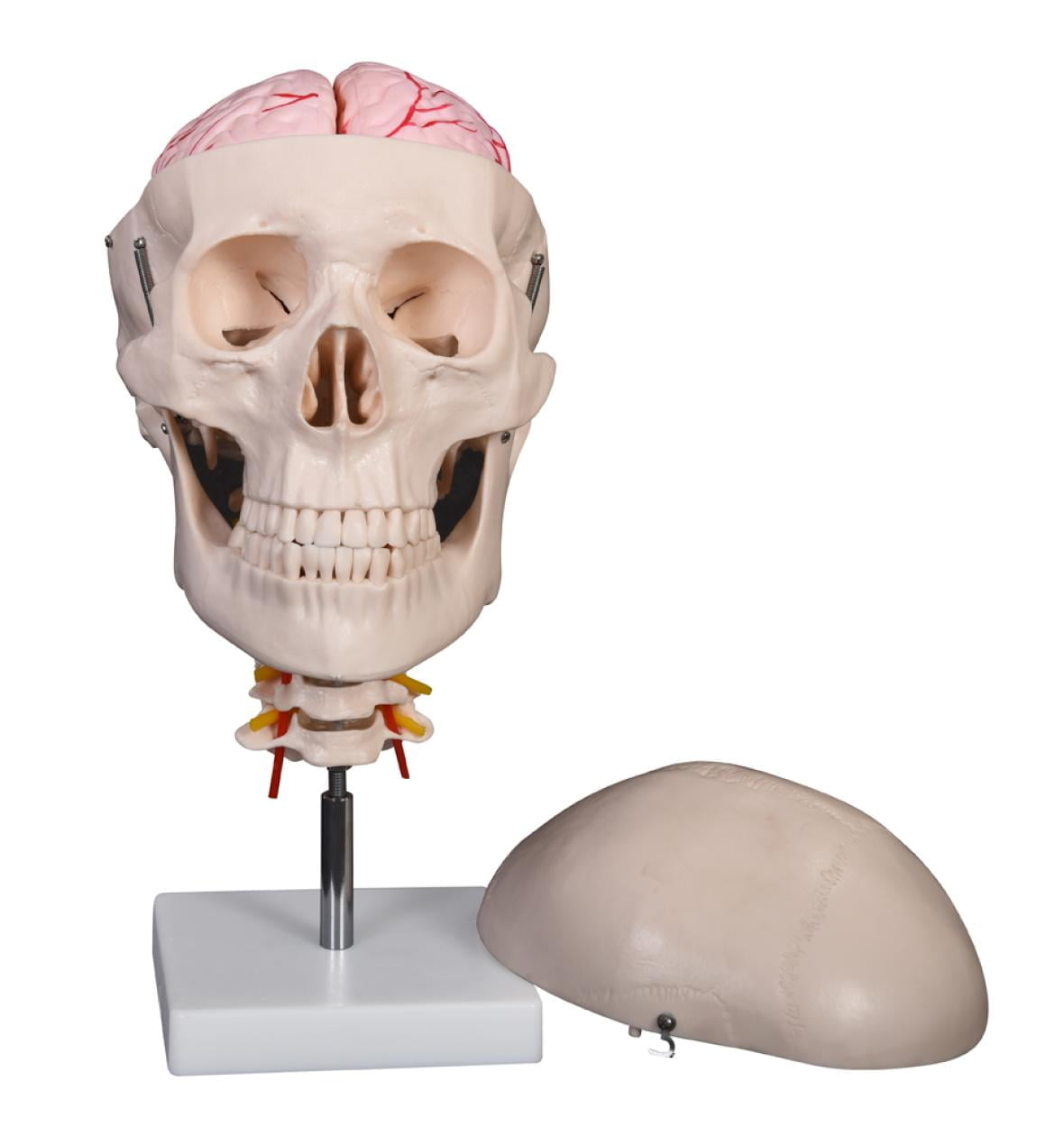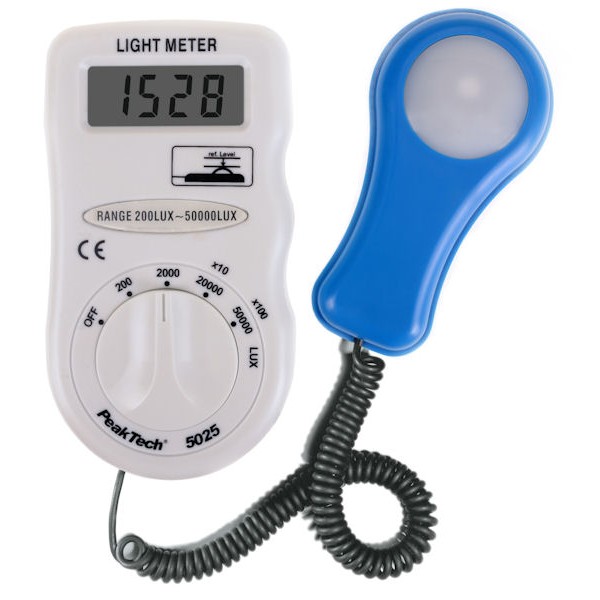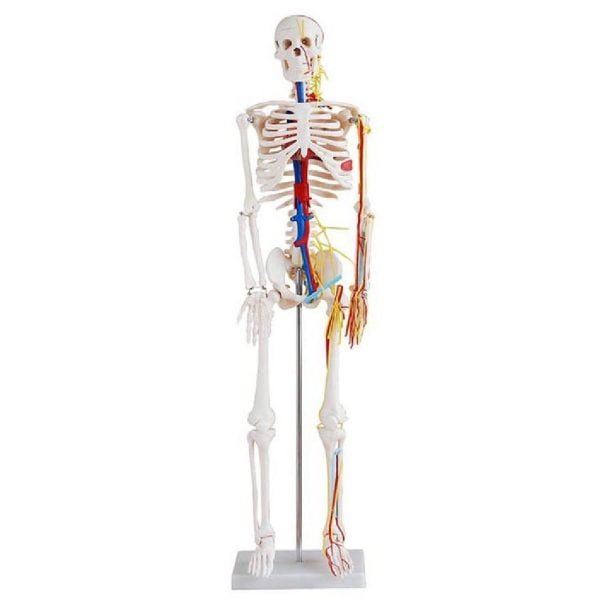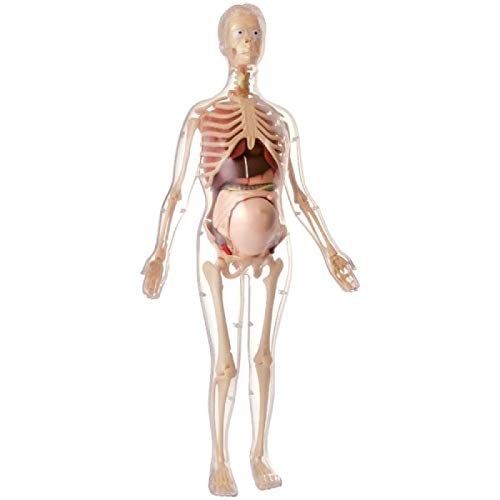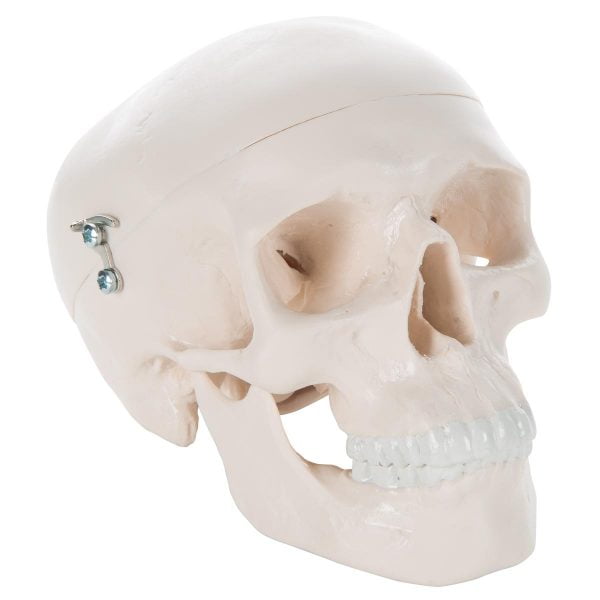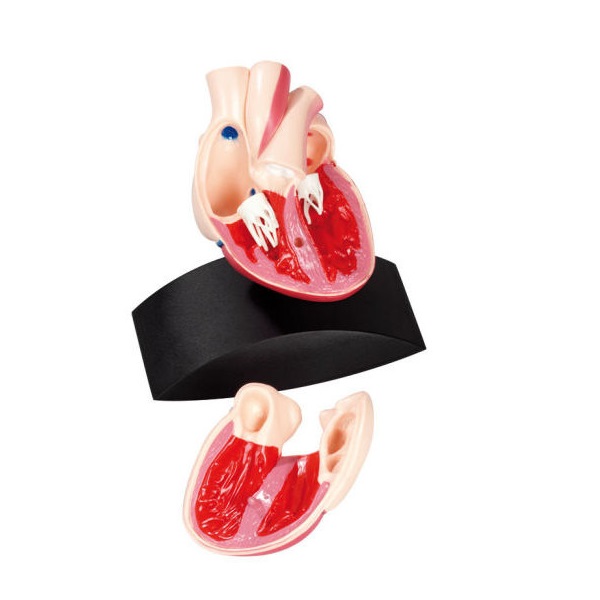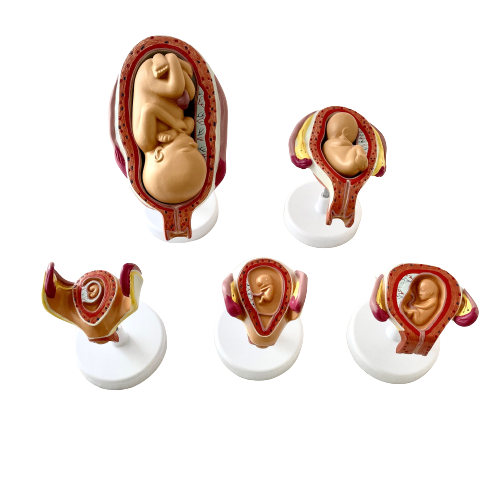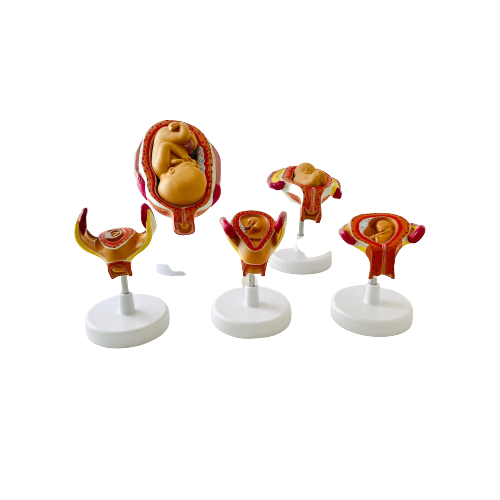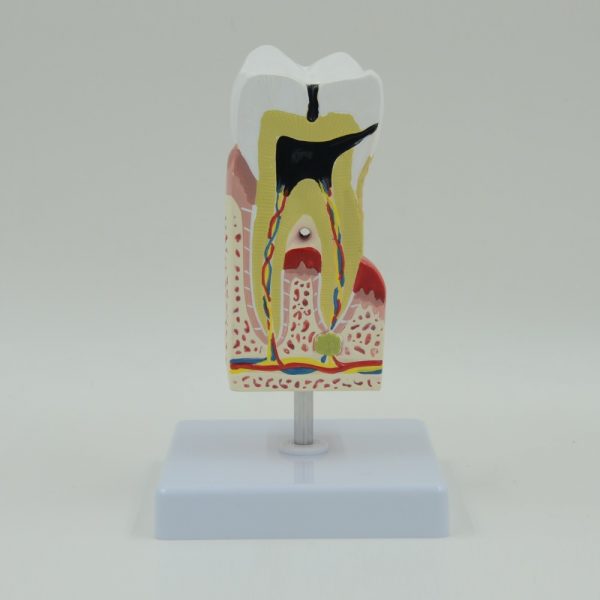ANATOMY OF THE BRAIN
Skull with 8 parts Brain
The main parts of the brain are:
The cerebral cortex is the largest part of the brain and consists of two cerebral hemispheres. They are divided into four lobes:
• the frontal lobe, which controls consciousness, emotion, mobility and speech expression
• the parietal lobe, which controls the senses of touch, such as pressure, pain and temperature.
It also partially controls speech, visual orientation in space, the ability to calculate.
• the temporal lobe, which controls memory, special senses such as hearing, and the ability to understand spoken or written words
• the occipital lobe, which controls vision
The cerebellum is located at the back of the brain below the occipital lobe of the brain. It is responsible for the coordination and balance and control of functions on the same side of the body.
The brain stem (medulla oblongata, bridge and midbrain). This is the part of the brain that connects to the spinal cord. It controls the involuntary functions necessary for life, such as the function of the heart and the breath. Messages about the functions controlled by the brain and cerebellum travel through the brainstem to the rest of the body.
The meninges: These are the membranes that surround and protect the brain and spinal cord. There are three layers of meninges, called: meninges (outer), arachnoid meninges (middle) and choroidal meninges (inner). Cerebrospinal fluid (CSF) is produced in the center of the brain, in the lateral ventricles, and circulates around the brain and spinal cord between the arachnoid and choroidal meninges.
Spinal cord
Skull with 8 parts Brain
The spinal cord is a long, thin, tubular structure made up of nervous tissue, which extends from the medulla oblongata in the brainstem to the lumbar region of the vertebral column. It encloses the central canal of the spinal cord, which contains cerebrospinal fluid. The brain and spinal cord together make up the central nervous system (CNS).
https://en.wikipedia.org/wiki/Spinal_cord


 Botzees
Botzees Keyestudio
Keyestudio Fischertechnik
Fischertechnik